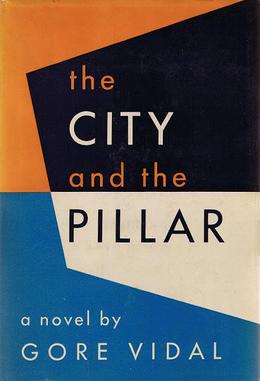
The City and the Pillar is the third published novel by American writer Gore Vidal, written in 1946 and published on January 10, 1948. The story is about a young man who is coming of age and discovers his own homosexuality.

Lambda Literary Awards, also known as the "Lammys", are awarded yearly by Lambda Literary to recognize the crucial role LGBTQ+ writers play in shaping the world. The Lammys celebrate the very best in LGBTQ+ literature. The awards were instituted in 1989.

Edmund Valentine White III is an American novelist, memoirist, playwright, biographer and an essayist on literary and social topics.

Paul Landry Monette was an American author, poet, and activist best known for his books about gay relationships.

Gay literature is a collective term for literature produced by or for the gay community which involves characters, plot lines, and/or themes portraying male homosexual behavior.

Wright Marion Morris was an American novelist, photographer, and essayist. He is known for his portrayals of the people and artifacts of the Great Plains in words and pictures, as well as for experimenting with narrative forms.

Richard Wayne Peck was an American novelist known for his contributions to modern young adult literature. He was awarded the Newbery Medal in 2001 for his novel A Year Down Yonder. He received the Margaret A. Edwards Award from the American Library Association in 1990.
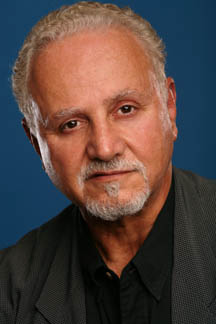
Felice Picano is an American writer, publisher, and critic who has encouraged the development of gay literature in the United States. His work is documented in many sources.

Gay pulp fiction, or gay pulps, refers to printed works, primarily fiction, that include references to male homosexuality, specifically male gay sex, and that are cheaply produced, typically in paperback books made of wood pulp paper; lesbian pulp fiction is similar work about women. Michael Bronski, the editor of an anthology of gay pulp writing, notes in his introduction, "Gay pulp is not an exact term, and it is used somewhat loosely to refer to a variety of books that had very different origins and markets". People often use the term to refer to the "classic" gay pulps that were produced before about 1970, but it may also be used to refer to the gay erotica or pornography in paperback book or digest magazine form produced since that date.
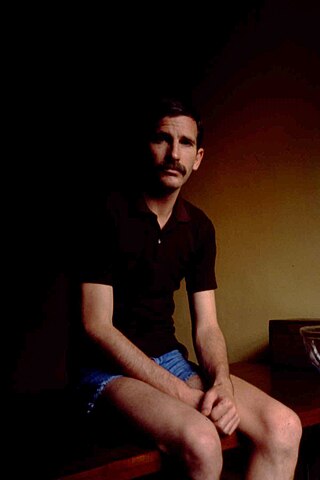
George Davis Whitmore was an American playwright, novelist, and poet. He also wrote non-fiction accounts about homosexuality and AIDS.

Victor Jerome Banis was an American author, often associated with the first wave of West Coast gay writing. For his contributions he has been called "the godfather of modern popular gay fiction." He was openly gay.
The Violet Quill was a group of seven gay male writers that met in 1980 and 1981 in New York City to read from their writings to each other and to critique them. This group and the writers epitomize the years between the Stonewall Riots and the beginning of the AIDS pandemic.
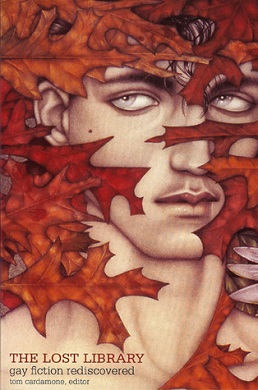
The Lost Library: Gay Fiction Rediscovered, edited by Tom Cardamone, includes appreciations by 28 contemporary writers of significant gay novels and short story collections now out of print. The Lost Library includes an essay on reprints of gay literature by Philip Clark. Published in March 2010, it features a cover illustration by Mel Odom.

Larry Mitchell was an American author and publisher. He was the founder of Calamus Books - an early small press devoted to gay male literature - and the author of fiction dealing with the gay male experience in New York City during the 1970s and 1980s.
Stan Leventhal was an American writer and magazine editor. Primarily known as the editor in chief of Heat Publications, a publisher of gay erotic magazines including Mandate, Torso and Inches, he also wrote and published several works of LGBT literature in the 1980s and 1990s. He published three novels and two short story collections during his lifetime; two additional novels were published following his death of AIDS in 1995.
Jameson Currier is an American novelist, short story writer, poet, critic, journalist, editor, and publisher.
Christopher Davis is an American writer. He is best known for his HIV/AIDS-themed novels Valley of the Shadow (1988), which was a shortlisted nominee for the Lambda Literary Award for Gay Fiction at the 1st Lambda Literary Awards in 1989, and Philadelphia (1994), a novelization of the 1993 drama film Philadelphia.
Randy Boyd is an American novelist and essayist. His writings explore the intersections of race and sexuality, pulling from his experience as a black gay man who is HIV-positive.

Lost Gay Novels is a 2003 reference guide written by Anthony Slide that provides commentary on 50 works of gay literature published between 1900 and 1950 that Slide found to be not well known by late 20th and early 21st-century audiences.
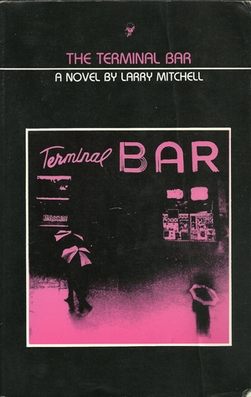
The Terminal Bar is a 1982 novel by Larry Mitchell. It was published by Mitchell's own literary press, Calamus Books, and received mixed reception in the gay press. It was among the first novels that dealt with HIV/AIDS in the United States.














